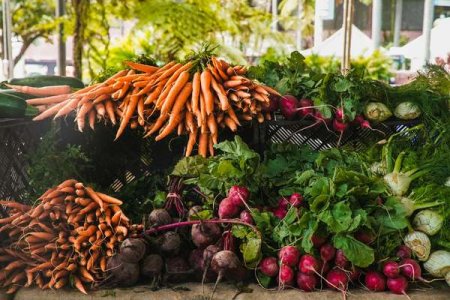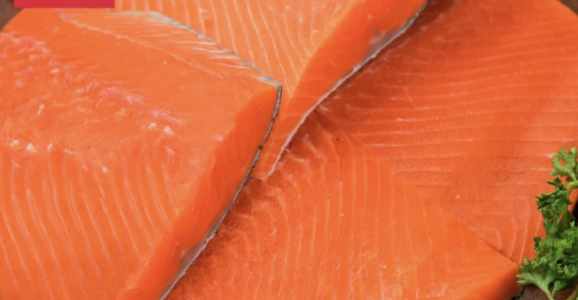The truth behind why junk food is more affordable than healthy food–Is it worth the extra expense?
- Replies 0
In the quest for a healthier lifestyle, many of us have encountered the harsh reality at the checkout line: eating well often means paying a premium. The advice to “just eat healthy” is easier said than done when faced with the financial burden that can accompany nutritious choices.
We understand the importance of maintaining a healthy diet, especially as we age, but we also recognize the challenges that come with it. Let's unpack the shocking truth behind why your healthy food habits might be draining your wallet and explore how to navigate this conundrum.
The journey of healthy food from farm to fork is fraught with expenses that drive up its cost. Fresh produce, lean meats, and fish don't just magically appear on store shelves.
They undergo a meticulous process involving harvesting, transportation, storage, and often a race against time to reach consumers before spoiling. This supply chain is delicate and costly, with each step adding dollars to the final price tag.
For instance, consider the transportation of fresh berries in winter. They may travel thousands of miles from warmer climates to reach your local supermarket, incurring fuel costs, labor, and the need for refrigerated trucks.

These factors contribute to the higher prices of healthy foods, especially when compared to their shelf-stable, processed counterparts.
On the flip side, processed foods have a much longer shelf life, thanks to preservatives that extend their usability.
These items can be manufactured in massive quantities, stored for extended periods, and don't require the same level of care in transportation.
The economies of scale work in favor of junk food, making it cheaper to produce and sell, which is reflected in the lower prices consumers see on the shelves.
When you break down the cost of food on a per-calorie basis, the disparity becomes even more apparent. Junk food, often high in sugar and fat, provides more calories per dollar than nutrient-dense foods like fruits and vegetables.
This creates a paradox where the less healthy option seems like a better value for money, particularly for those on a tight budget or with limited access to fresh food markets.
The perception of healthy foods as expensive can create a psychological barrier that deters consumers.
According to a 2023 Cleveland Clinic survey, nearly half of the respondents cited the cost of fresh food as a significant obstacle to eating healthier. This mindset can lead to a vicious cycle where individuals opt for cheaper, less nutritious options, potentially compromising their health in the long run.
Despite these challenges, eating well without breaking the bank is achievable. Here are some strategies to help you maintain a healthy diet while keeping an eye on your finances:
1. Seasonal Selections: Focus on fruits and vegetables that are in season. They're often less expensive due to lower transportation costs and abundance.
2. Frozen Fruits and Veggies: Frozen produce is typically flash-frozen at peak ripeness, preserving most of the nutrients and offering a more budget-friendly alternative to fresh produce.
3. Bulk Buying: Purchase non-perishable healthy items like whole grains, lentils, and beans in bulk. They have a long shelf life and can be a cost-effective source of nutrition.

4. Plan and Prep: Meal planning and prepping can reduce waste and ensure you're using all the ingredients you buy. It also prevents the temptation to order takeout.
5. Grow Your Own: If you have the space, consider growing your own herbs, vegetables, or fruits. It's a rewarding and cost-effective way to enjoy fresh produce.
6. Community Supported Agriculture (CSA): Join a CSA program to receive a regular supply of fresh produce directly from local farmers at a better price than you might find in stores.

Have you found a local market with great deals on produce? Do you have a favorite budget-friendly recipe that's both nutritious and delicious? Share your experiences and insights in the comments below!
We understand the importance of maintaining a healthy diet, especially as we age, but we also recognize the challenges that come with it. Let's unpack the shocking truth behind why your healthy food habits might be draining your wallet and explore how to navigate this conundrum.
The journey of healthy food from farm to fork is fraught with expenses that drive up its cost. Fresh produce, lean meats, and fish don't just magically appear on store shelves.
They undergo a meticulous process involving harvesting, transportation, storage, and often a race against time to reach consumers before spoiling. This supply chain is delicate and costly, with each step adding dollars to the final price tag.
For instance, consider the transportation of fresh berries in winter. They may travel thousands of miles from warmer climates to reach your local supermarket, incurring fuel costs, labor, and the need for refrigerated trucks.

Healthy foods like fresh fruits, vegetables and meats tend to be more expensive due to supply chain requirements. Image source: Pexels / Wendy Wei.
These factors contribute to the higher prices of healthy foods, especially when compared to their shelf-stable, processed counterparts.
On the flip side, processed foods have a much longer shelf life, thanks to preservatives that extend their usability.
These items can be manufactured in massive quantities, stored for extended periods, and don't require the same level of care in transportation.
The economies of scale work in favor of junk food, making it cheaper to produce and sell, which is reflected in the lower prices consumers see on the shelves.
When you break down the cost of food on a per-calorie basis, the disparity becomes even more apparent. Junk food, often high in sugar and fat, provides more calories per dollar than nutrient-dense foods like fruits and vegetables.
This creates a paradox where the less healthy option seems like a better value for money, particularly for those on a tight budget or with limited access to fresh food markets.
The perception of healthy foods as expensive can create a psychological barrier that deters consumers.
According to a 2023 Cleveland Clinic survey, nearly half of the respondents cited the cost of fresh food as a significant obstacle to eating healthier. This mindset can lead to a vicious cycle where individuals opt for cheaper, less nutritious options, potentially compromising their health in the long run.
Despite these challenges, eating well without breaking the bank is achievable. Here are some strategies to help you maintain a healthy diet while keeping an eye on your finances:
1. Seasonal Selections: Focus on fruits and vegetables that are in season. They're often less expensive due to lower transportation costs and abundance.
2. Frozen Fruits and Veggies: Frozen produce is typically flash-frozen at peak ripeness, preserving most of the nutrients and offering a more budget-friendly alternative to fresh produce.
3. Bulk Buying: Purchase non-perishable healthy items like whole grains, lentils, and beans in bulk. They have a long shelf life and can be a cost-effective source of nutrition.

Shelf-stable foods are cheaper to manufacture in bulk and have lower transportation and storage costs due to their longer shelf life, but are generally less nutritious. Image source: Pexels / Kristina Snowasp.
4. Plan and Prep: Meal planning and prepping can reduce waste and ensure you're using all the ingredients you buy. It also prevents the temptation to order takeout.
5. Grow Your Own: If you have the space, consider growing your own herbs, vegetables, or fruits. It's a rewarding and cost-effective way to enjoy fresh produce.
6. Community Supported Agriculture (CSA): Join a CSA program to receive a regular supply of fresh produce directly from local farmers at a better price than you might find in stores.
Key Takeaways
- Healthy foods like fresh fruits, vegetables and meats tend to be more expensive due to supply chain requirements such as rapid transport and storage, as well as replenishment of expired products.
- Labor shortages and the demand for out-of-season produce can increase the cost of fresh food items.
- Shelf-stable foods are cheaper to manufacture in bulk and have lower transportation and storage costs due to their longer shelf life, but are generally less nutritious.
- A survey found that nearly half of American respondents view the cost of fresh food as a barrier to eating healthier, and many resort to buying fast food due to its affordability.
Have you found a local market with great deals on produce? Do you have a favorite budget-friendly recipe that's both nutritious and delicious? Share your experiences and insights in the comments below!






